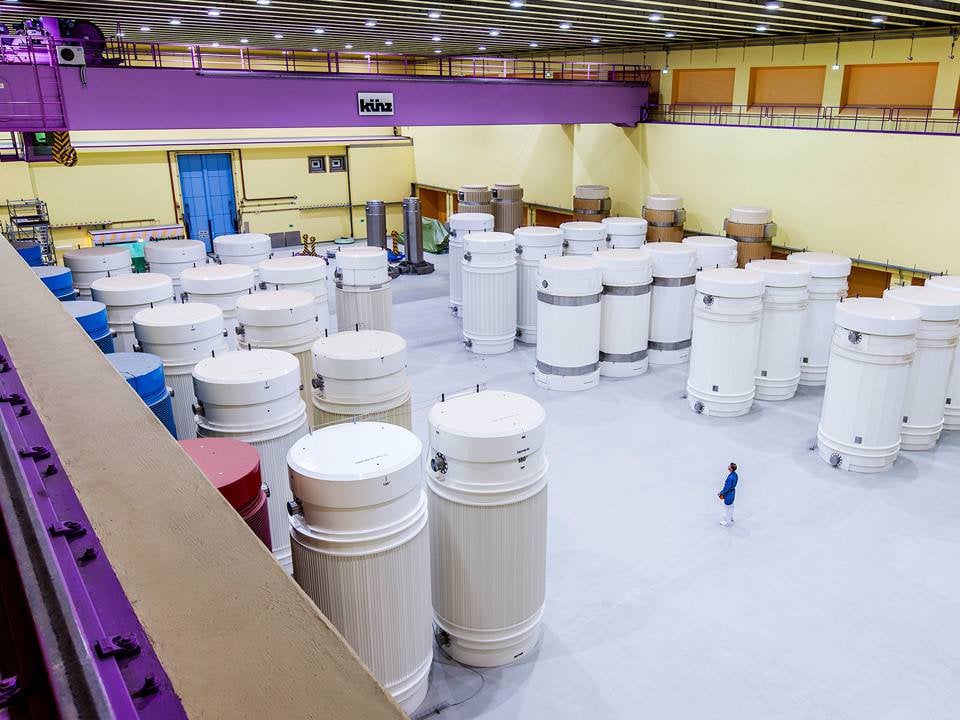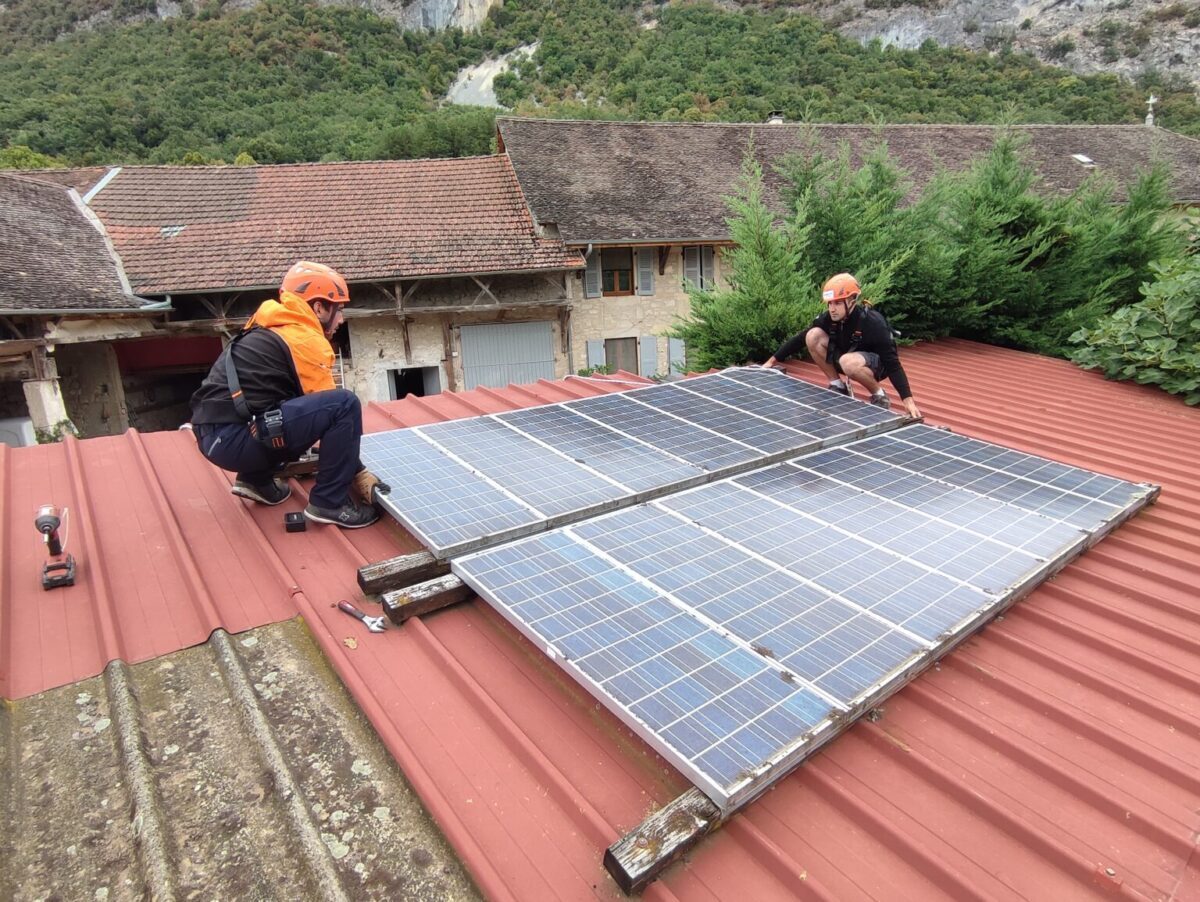There’s a typo in the title. If you go back to the original source (in french), they actually retain 79,5 % of their original efficiency, so even better than the article’s title would have you believe.
I guess we can blame the French’s confusing number system for that.
People seem to be angry at you for not knowing how the French count. My condolences. I found it funny tho. Have un upvote
It’s good to know that they have pretty good longevity. One thing complicating this is that panel technology has gotten better and better during that time. There’s a graph on Wikipedia plotting how much better the various types of panel have gotten since the 70s. A lot of them have doubled in output since the early 90s.
So on the one hand, these old panels are outputting 75% of what they started with, which is good. But on then other hand they are only outputting about 37% of what new panels could.
Not that we should throw old panels away. There’s plenty of sun to go around (though I guess the average homeowner only has one roof to use). It’s just interesting how fast the tech has improved and how that might factor in to some longevity calculations.
If that became a problem, every old panel could be changed by newer ones and the old ones could be installed in a desert until their EOL.
Right, they could be installed in the middle of nowhere as free phone chargers and stuff even if there was no other use for them. Just set them up with a used inverter and some used chargers, whatever etc.
Or maybe a whole lot of them could be put together in the middle of nowhere to make an EV charging station
Wow, imagine where we’d be if Oil and Gas hadn’t convinced almost everyone that solar was never going to work well.
Imagine where we’d be if people didn’t automatically think nuclear power=Homer Simpson
The great thing about nuclear power is that the real cost only comes after the power has been generated. How do you store the spent fuel cells and what do you do with the reactor when it can’t be used anymore. Just before that happens you spin the plant into its own company. When that company goes bankrupt the state needs to cover the cost, as it isn’t an option to just leave it out in the open.
Privatise profit communalism cost.
 Here’s all of Switzerland’s high level nuclear waste for the last 45 years. It solid pellets. You could fit the entire
Here’s all of Switzerland’s high level nuclear waste for the last 45 years. It solid pellets. You could fit the entire world’sUS’ waste on a football field.It’s not the greatest challenge mankind have faced.
In Germany, we’ve got a location with 47,000 cubic meters: https://www.bge.de/en/asse/
That requires some pretty tall stacking on that football field. Or I guess, you’re saying if you’d unpack it all and compress it?Also, we really should be getting the nuclear waste out of said location, since there’s a known risk of contamination. But even that challenge is too great for us, apparently.
Mainly, because we don’t have any locations that are considered safe for permanent storage. It’s cool that Switzerland has figured it out. And that some hypothetical football field exists. But it doesn’t exist in Germany, and I’m pretty sure, Switzerland doesn’t want our nuclear waste either.we don’t have any locations that are considered safe for permanent storage
I’m gonna hazard a guess that the “consideration” was not from actual scientists but rather activist homeowner groups in every potential site.
NIMBYism and nuclear, name a more iconic duo
I mean, can you blame them? Why would anyone want toxic waste in their backyard? Not to mention that the search is mainly conducted by companies, which have a vested interest in not making all the issues transparent.
Having said that, I am not aware of the ‘scientists’ coming up with good suggestions either. Gorleben got hemmed and hawed around for the longest time, but its selection process was non-scientific from the start.
It’s genuinely not easy to find a location where anyone would be willing to claim that it will remain unaffected by geodynamic processes for millions of years. And we don’t have a big desert or some other unpopulated area where you could chuck it without political opposition, when it’s not 110% safe to do so.
Why would anyone want toxic waste in their backyard?
It’s not toxic, nor is it in their backyard.
Not to mention that the search is mainly conducted by companies, which have a vested interest in not making all the issues transparent.
What issues?
It’s genuinely not easy to find a location where anyone would be willing to claim that it will remain unaffected by geodynamic processes for millions of years.
Imagine where we’d be if leftists embraced nuclear power instead of killing it off everywhere they could.
Here in Italy, the only parties that seem to be favorable to nuclear are right-wing.
And of course, they got elected and didn’t actually do anything towards it.
I’d like to specifically blame the vocal greens and not left or center left people in general.
The weird thing is that in this scenario these panels are still applicable for replacement probably because the the solar panels of today compared to then are about ~40% more efficient. So compared to a new replacement it’s at around 60% efficiency. A major site plans profit off of 30 years and plans to replace glass at that time, so while it may still be somewhat useful long term it’s probably more profitable to replace them.
This is gonna sound so dumb… But they had solar panels back then?!
Jesus Christ. Look, back in the Stone Age when I went to school the coolest calculator was the TI-36 Solar. It was already that mundane.
Naturally, I used a non-solar Casio, because I wasn’t one of the cool nerds.
Carter called for solar panels to be installed on the White House in 1979. Modern ones are probably way more efficient but they were definitely a thing.
Sounds like you should install double what you think you need. Reason? The panels will start losing efficiency over time and your electricity usage over time will do nothing but grow. That’s very common.
Dude.
Those panels lost only 20%, so far from half, in 32 years.
That’s impressive.
I didn’t say they lost half but they lost 20% so you need to have at least 120% today and then you need to account for the fact that you will get more electric devices in the future. How are you going to charge your electric car if you don’t have the electric to do it? So therefore you should probably double it.







